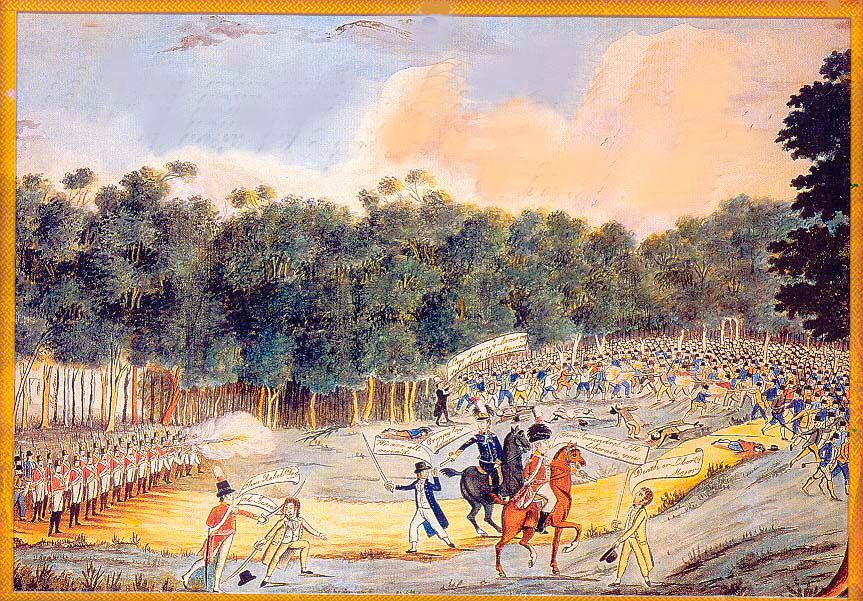Castle Hill Rebellion March 4 1804
|
||||||||||
The Castle Hill uprising had been planned for at least a month by a small group of men at the Government Farm. At eight o’clock in the evening of Sunday 4 March 1804, one of the small huts occupied by the prisoners at the farm was deliberately set alight and a bell rung. Whilst the guards’ attention was diverted by the fire, Philip Cunningham, who was the overseer of the stonemasons and supported by other prisoners, broke into the stores where firearms and ammunition were kept.
 |
Cunningham made a speech revealing his plans for the conquest of the colony and explained that they would be supported by risings in other settlements. The rebels divided into three raiding parties and set out in different directions to collect recruits. During this night they burst in on settlers in their isolated farmhouses – including Macarthur’s farm in the Pennant Hills region [near North Rocks and Pennant Hills Roads junction] – and took weapons. The parties were to meet on a hill (Constitution Hill) near Parramatta at daybreak and enter the town.
The Sydney Gazette’s report on the rebellion stated that Cunningham planned to plant the ‘Tree of Liberty’ at Government House, Parramatta, before proceeding on to Sydney, boarding a ship and sailing home to Ireland. Such was the almost romantic view by these Irishmen of mounting a revolt against the colonial government led by Governor King.
King declared martial law and instructed Major George Johnston to march on the rebels. Johnston employed delaying tactics in his pursuit of Cunningham and his men, so that he could bring the maximum number of soldiers to defeat them.
Major Johnston, under a flag of truce, reasoned with the leaders telling them of the ‘impropriety of their conduct’ and that he wished to prevent any loss of life. He asked Cunningham what he wanted; he replied ‘death or liberty’ upon which Major Johnston cocked his pistol and pointed it at his head.
Trevor Patrick is a local historian of the north-west of Sydney, Australia. His latest book, In Search of the Pennant Hills, recounts some of these stories (and others) in more detail.